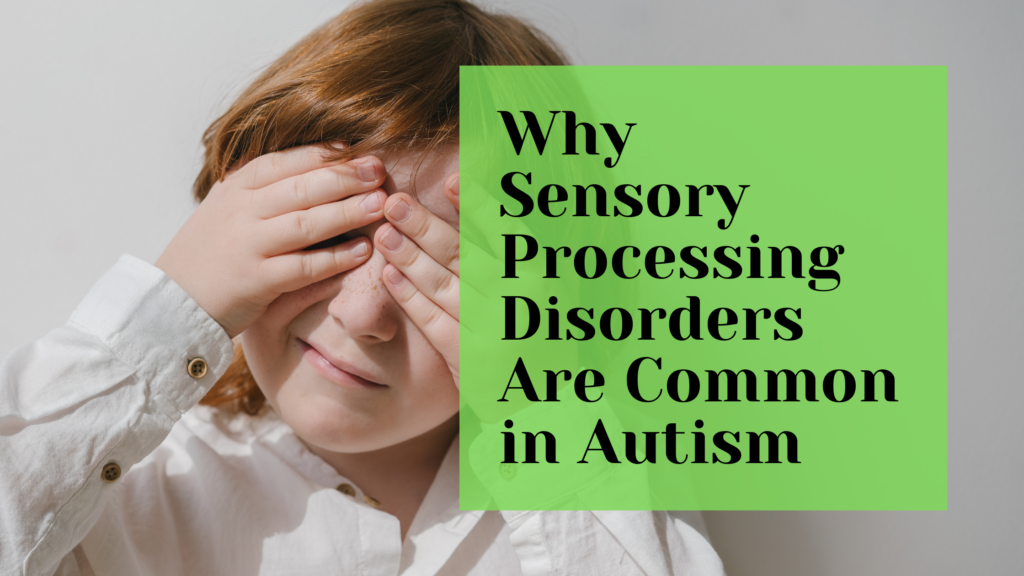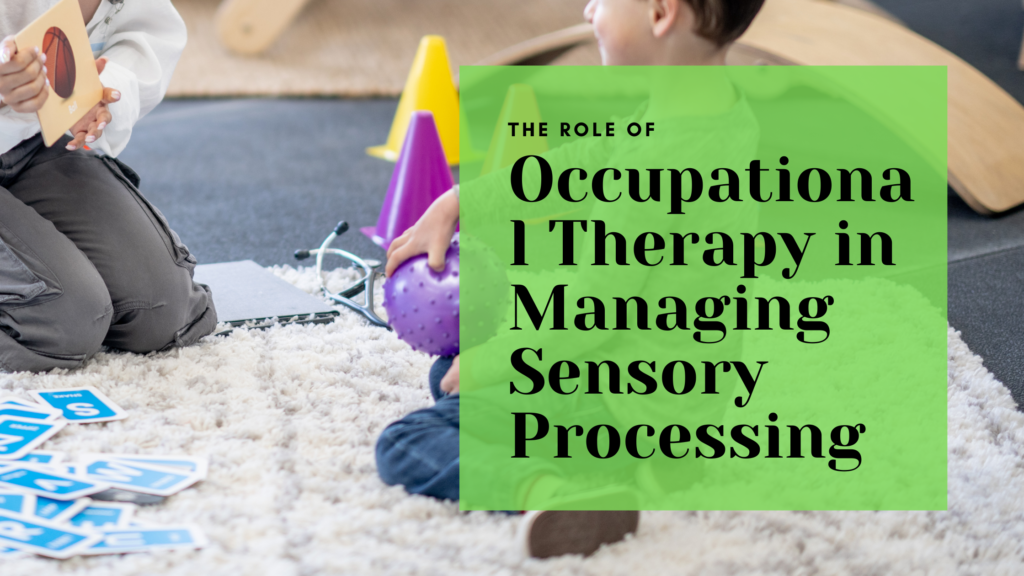Introduction
Imagine living in a world where everyday experiences like the sound of a doorbell or the texture of your clothing cause intense discomfort. For many individuals with autism, this is a daily struggle. Sensory processing disorders (SPD) are highly prevalent among those with autism, with studies indicating that up to 90% of children on the autism spectrum experience significant sensory challenges. Understanding SPD within the context of autism is crucial for creating supportive environments and improving quality of life.
Autism spectrum disorder (ASD) is a complex developmental condition that affects communication, behavior, and social interaction. A lesser-known but equally important aspect of autism is the presence of sensory processing disorders. SPD affects how the brain processes sensory information, leading to atypical responses to sounds, sights, smells, and touch. Recognizing and addressing SPD in individuals with autism is essential for enhancing their daily experiences and overall well-being.
This article provides a comprehensive understanding of sensory processing disorders in individuals with autism, focusing on symptoms, causes, and effective management strategies. By exploring these areas, we aim to equip parents, educators, and caregivers with the knowledge needed to support those affected by SPD.

What Are Sensory Processing Disorders?
Definition
Sensory processing disorders occur when the brain has difficulty organizing and interpreting sensory information. This can lead to inappropriate responses to stimuli that others might find unremarkable. For individuals with SPD, everyday sensations like the sound of a vacuum cleaner or the feel of certain fabrics can be overwhelming or, conversely, barely noticeable.
Types of Sensory Processing Issues
SPD in autism can manifest in several ways:
- Hyper-responsiveness (Sensory Overload): Individuals with hyper-responsiveness are overly sensitive to sensory inputs. Common triggers include loud noises, bright lights, or certain textures. For instance, a child might become distressed by the sound of a vacuum cleaner or refuse to wear specific clothing due to discomfort.
- Hypo-responsiveness: In hypo-responsive individuals, the brain underreacts to sensory stimuli, leading them to seek out sensory input. They may not respond to pain or may engage in behaviors like hand-flapping or spinning to fulfill their sensory needs.
- Mixed Responsiveness: Some individuals exhibit both hyper- and hypo-responsiveness, depending on the type of sensory input. For example, they may be hypersensitive to sound but actively seek strong tactile sensations.

How Sensory Processing Disorders Manifest in Autism
Common Sensory Issues in Autism
Sensory processing disorders often manifest in autism through specific sensory sensitivities:
- Auditory Sensitivities: Loud noises or unexpected sounds can cause extreme distress. For example, a school fire alarm might be intolerable, leading to anxiety or panic.
- Visual Sensitivities: Bright lights, especially fluorescent lighting, can be overwhelming, making it difficult to focus or remain calm in environments like classrooms or stores.
- Tactile Sensitivities: Averse reactions to textures, such as the feeling of certain fabrics or the sensation of water, are common. Some individuals may also dislike being touched.
- Olfactory Sensitivities: Strong smells, whether pleasant or unpleasant, can be intolerable, affecting daily activities like eating or personal hygiene.
- Gustatory Sensitivities: Preferences for specific food textures or flavors are typical, leading to selective eating habits. For example, a child might only eat crunchy foods, avoiding anything mushy or mixed.
- Vestibular and Proprioceptive Challenges: These issues relate to balance and body awareness. Individuals may struggle with coordination or exhibit a strong preference for movement activities like swinging or jumping.
Real-Life Examples
Consider a child with autism who refuses to enter a brightly lit supermarket because the fluorescent lights are overwhelming. Or think of a teenager who avoids social events due to the noise levels, which feel unbearably loud. These examples highlight how sensory processing disorders can profoundly impact the daily lives of those with autism.
Causes and Risk Factors of Sensory Processing Disorders in Autism
Neurological Basis
Current research suggests that differences in brain function and structure contribute to sensory processing disorders in autism. Brain regions responsible for processing sensory information, such as the thalamus and sensory cortices, may operate differently, leading to atypical sensory experiences.
Genetic Factors
Genetics also play a significant role in the development of SPD in individuals with autism. Certain genetic mutations and variations associated with autism may also predispose individuals to sensory processing issues. Understanding these genetic factors can help in developing targeted interventions.

Environmental Influences
Environmental factors can exacerbate or mitigate sensory processing challenges. Early life experiences, such as exposure to certain toxins or stress, may affect sensory development. Additionally, the level of sensory stimulation in one’s environment, whether at home or in school, can influence the severity of SPD symptoms.
Developmental Factors
Sensory processing issues can change over time, often influenced by developmental stages. For some children with autism, sensory sensitivities may become more pronounced during periods of rapid growth, such as puberty. Recognizing these developmental factors is key to providing timely and appropriate support.
Diagnosis and Assessment of Sensory Processing Disorders in Autism
Diagnostic Criteria
Diagnosing sensory processing disorders in individuals with autism can be challenging. Although SPD is not officially recognized as a distinct disorder in many diagnostic manuals, clinicians use specific tools to assess sensory issues, such as the Sensory Profile or the Sensory Processing Measure. These assessments help identify patterns of sensory responses that impact daily functioning.
Role of Occupational Therapy
Occupational therapists are crucial in assessing and diagnosing SPD in individuals with autism. They evaluate how sensory processing issues affect daily tasks and develop personalized intervention plans to address these challenges. Through targeted therapy, occupational therapists can significantly improve an individual’s ability to manage sensory input.

Challenges in Diagnosis
One major challenge in diagnosing SPD is the overlap of symptoms with other conditions, such as anxiety or ADHD. This overlap can make it difficult to determine whether sensory issues are the primary concern or part of a broader set of challenges. A comprehensive evaluation by a multidisciplinary team is often necessary for an accurate diagnosis.
Management and Treatment Strategies
Sensory Integration Therapy
What It Is
Sensory integration therapy is a widely used treatment for sensory processing disorders. It involves play-based activities designed to help individuals with autism respond more effectively to sensory input. These activities aim to improve the brain’s ability to process sensory information.
Effectiveness
While research on sensory integration therapy is ongoing, there is evidence that it can improve sensory processing and related behaviors in children with autism. However, the effectiveness of this therapy can vary, and it is most successful when tailored to the individual’s specific needs.
Environmental Modifications
At Home
Creating a sensory-friendly environment at home can greatly alleviate the challenges associated with SPD. This may include setting up quiet spaces, using dimmable lighting, and choosing sensory-friendly fabrics. Establishing a routine that minimizes sensory overload, such as limiting exposure to loud noises or strong smells, is also beneficial.
In School
Schools can implement accommodations for students with sensory processing disorders. Strategies include providing access to sensory rooms, offering flexible seating, and allowing sensory breaks during the day. Educators should work with occupational therapists to create individualized education plans (IEPs) or 504 plans that address sensory needs.
Use of Sensory Tools
Weighted Blankets
Weighted blankets provide deep pressure stimulation, which can have a calming effect and help reduce anxiety, particularly in individuals with sensory processing disorders.
Noise-Canceling Headphones
These headphones are effective for managing auditory sensitivities by blocking out overwhelming sounds in noisy environments like schools or public places.
Fidget Tools and Sensory Toys
Fidget tools and sensory toys offer tactile stimulation and provide a focused outlet for excess energy, helping individuals with autism manage sensory input.
Behavioral Interventions
Cognitive Behavioral Therapy (CBT)
CBT is a valuable tool for managing the anxiety associated with sensory processing disorders. It helps individuals develop coping strategies to deal with overwhelming sensory experiences.
Mindfulness and Relaxation Techniques
Techniques such as deep breathing, guided imagery, and mindfulness can help individuals with autism cope with sensory overload by promoting calmness and focus.
The Importance of Support and Advocacy
Parental and Caregiver Support
Education
Educating parents and caregivers about sensory processing disorders is essential for effective management. Understanding SPD and learning how to respond to sensory challenges can significantly improve the quality of life for both the individual and their family.
Support Groups
Support groups offer a valuable resource for parents and caregivers, providing emotional support, practical advice, and a sense of community. Connecting with others who face similar challenges can be empowering and informative.

Advocacy in Schools and Communities
IEP and 504 Plans
Advocating for sensory accommodations in educational settings ensures that children with SPD receive the support they need. IEP and 504 plans can be customized to include sensory considerations, helping students succeed academically and socially.
Community Awareness
Raising awareness about sensory processing disorders in the broader community is essential for creating inclusive environments. Educating the public about SPD promotes understanding and acceptance of individuals with sensory challenges.
Resources and Further Reading
For those seeking more information and support, various resources such as books, websites, and organizations dedicated to autism and sensory processing disorders are available. These resources offer practical advice, research updates, and connections to support networks.
Conclusion
Summary
Understanding sensory processing disorders in individuals with autism is critical for providing effective support and enhancing their quality of life. By recognizing the symptoms, exploring the causes, and implementing appropriate management strategies, we can help those with autism navigate the sensory challenges they face daily.
Final Thoughts
Sensory processing disorders are a significant aspect of autism that requires attention and understanding. By fostering awareness, promoting inclusion, and ensuring that individuals with autism receive the support they need, we can positively impact their lives.
Call to Action
If you suspect that your child or someone you know may have sensory processing issues, seek professional advice and explore the available resources. Get involved in advocacy efforts to create a more sensory-friendly world for everyone.


